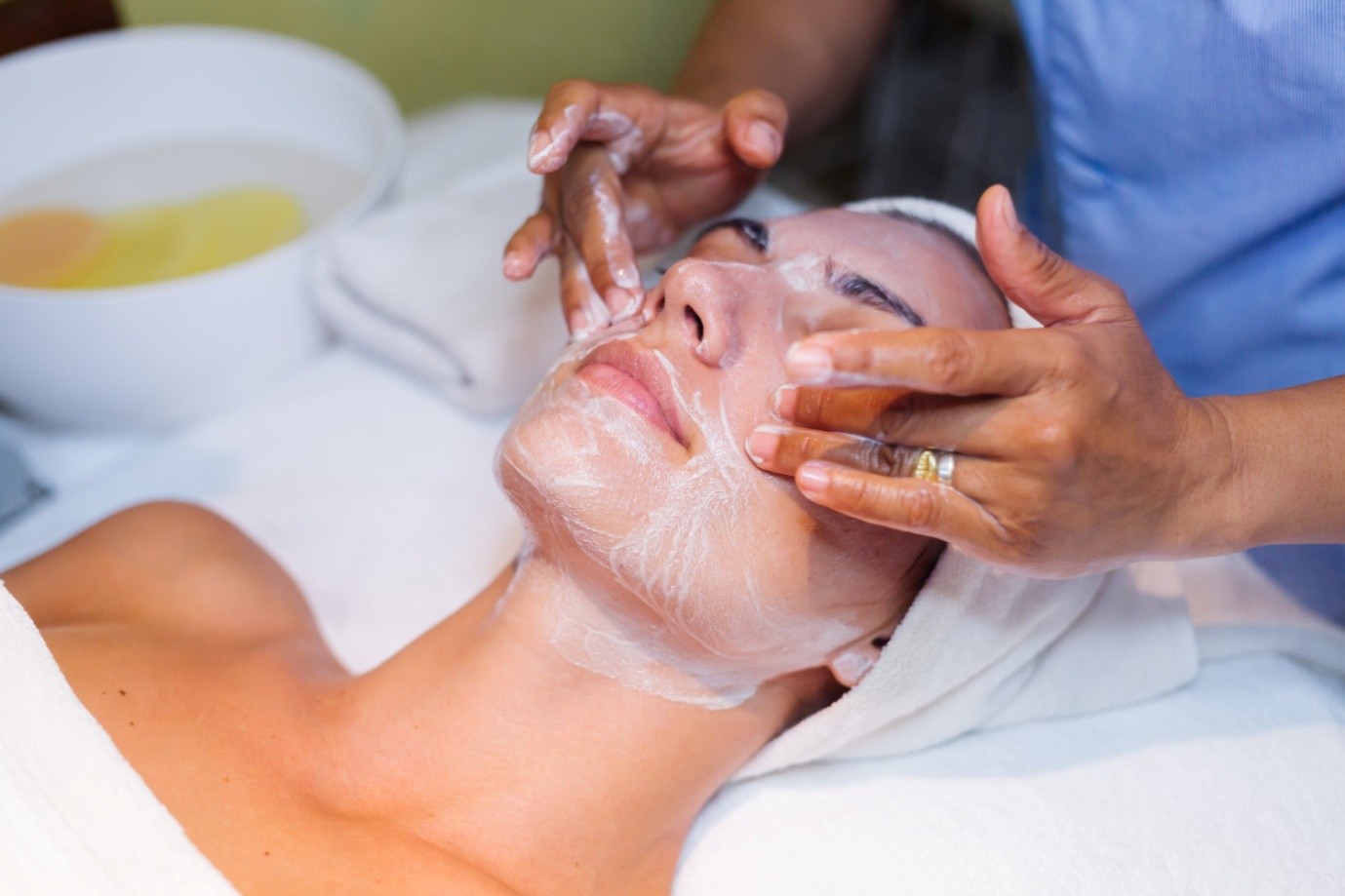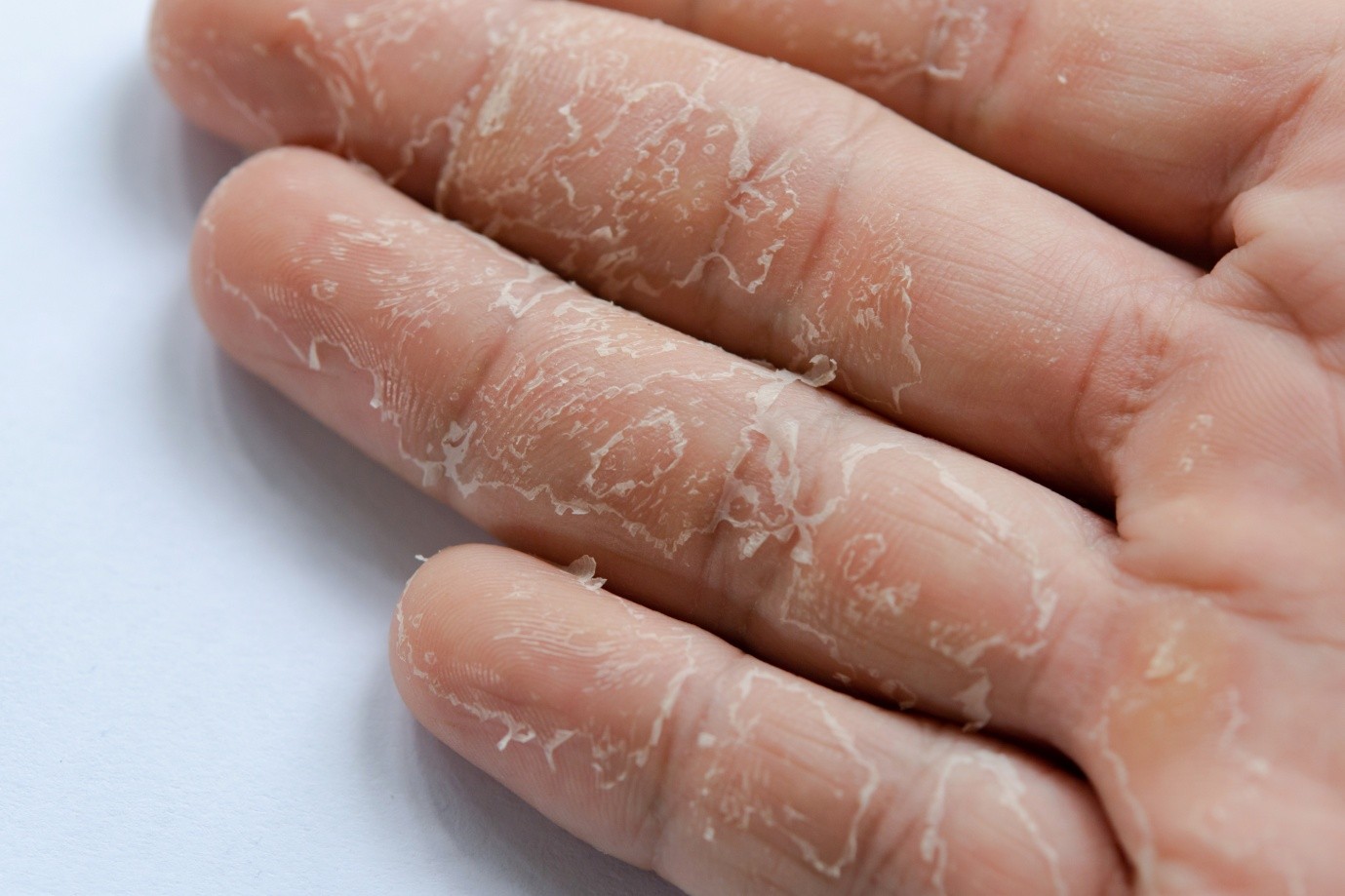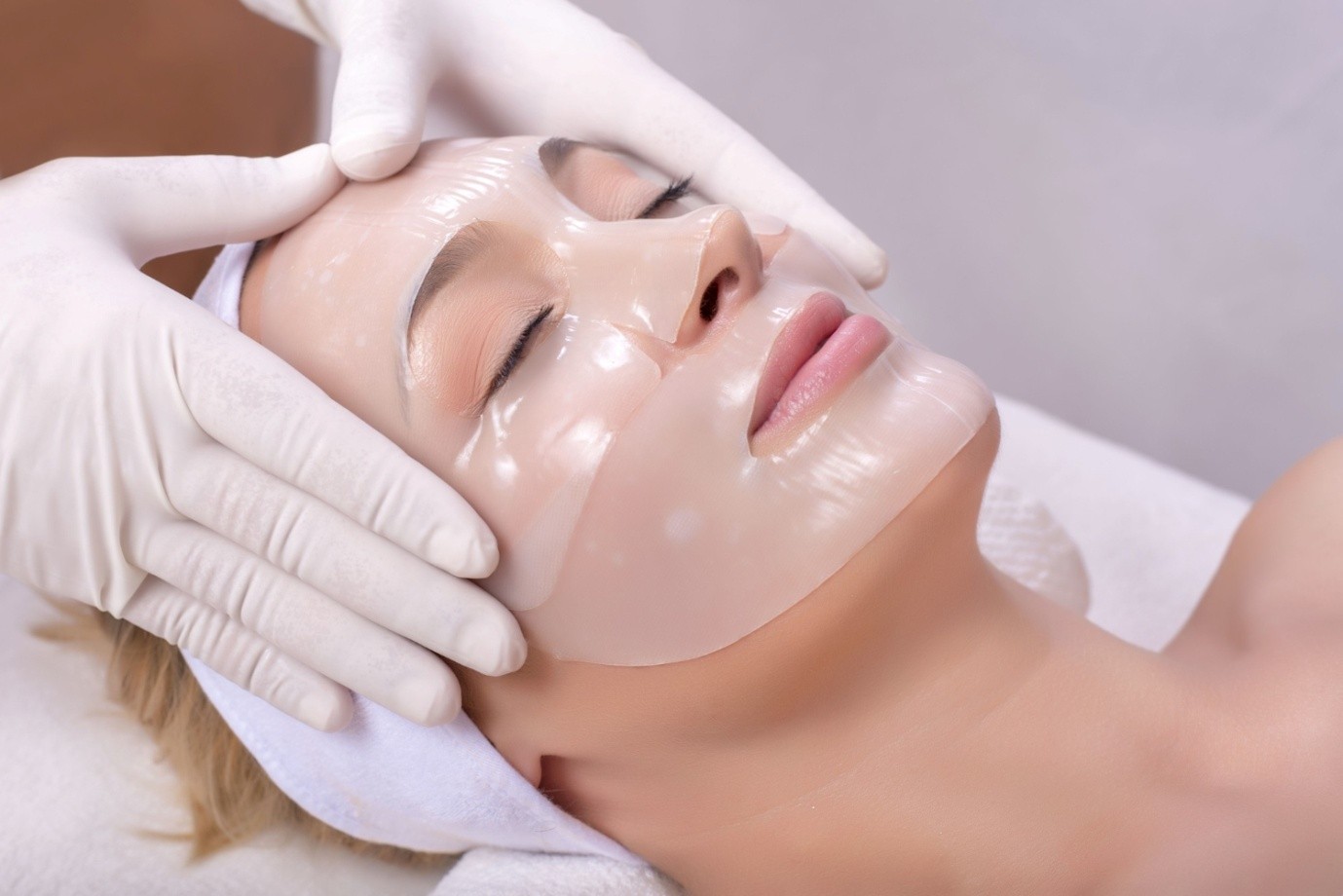Unveiling Radiance: What Is Skin Peeling and How Does It Work?
In the ever-evolving world of skincare, the quest for a flawless, radiant complexion is one many of us eagerly pursue. From creams and serums to masks and mists, the beauty aisle is overflowing with promises of a luminous glow.
Yet, among these options, skin peeling stands out as a transformative treatment that delivers real, visible results. By deeply rejuvenating the skin, it can address issues that topical products often can’t reach.
This comprehensive guide will walk you through everything you need to know about skin peeling—from how it works and the different types available to its benefits, procedure insights, and essential aftercare tips.


What is Skin Peeling? A Deeper Look
At its core, skin peeling, also known as chemical peeling, is a cosmetic procedure designed to improve the appearance of the skin on the face, neck, or hands. It involves applying a chemical solution to the skin, which causes it to exfoliate and eventually peel off. The new, regenerated skin underneath is typically smoother, less wrinkled, and more even in tone.
Think of it like a controlled injury to the skin. By removing the outermost, often damaged, layers, the body's natural healing processes are stimulated, leading to the growth of fresh, healthy skin cells. This renewal process can address a wide array of common skin concerns.
Types of Skin Peels: Tailoring the Treatment
Not all skin peels are created equal. They vary significantly in their strength, the depth to which they penetrate the skin, and the types of concerns they can address. Peels are generally categorized into three main types:
Superficial Peels (Lunchtime Peels):
- Penetration: These are the mildest type of peels, working only on the outermost layer of the skin (the epidermis).
- Chemicals Used: They typically use mild acids like alpha-hydroxy acids (AHAs) such as glycolic acid or lactic acid, or beta-hydroxy acids (BHAs) like salicylic acid, often in lower concentrations. Fruit enzymes like those from pineapple (bromelain) or papaya (papain) can also be used.
- Concerns Addressed: Ideal for improving mild skin discoloration, refreshing a dull complexion, treating mild acne, and smoothing out rough skin.
- Downtime: Minimal, usually just some redness and slight flaking for a few days. Many people can return to their daily activities immediately, hence the nickname "lunchtime peel."
- Frequency: Can often be repeated every 2-5 weeks to maintain results.
Medium Peels:
- Penetration: These peels reach the middle layers of the skin (the papillary dermis).
- Chemicals Used: Common agents include trichloroacetic acid (TCA) in moderate concentrations, sometimes in combination with glycolic acid or Jessner's solution (a mix of salicylic acid, lactic acid, and resorcinol).
- Concerns Addressed: Effective for treating age spots, fine lines and wrinkles, moderate skin discoloration (like melasma or post-inflammatory hyperpigmentation), and more significant textural issues. They can also be used for some precancerous skin growths like actinic keratoses.
- Downtime: More significant than superficial peels. Expect redness, swelling, and skin peeling that can last for 7-14 days. The skin will be sensitive during this period.
- Frequency: Usually performed less frequently, perhaps every 6-12 months, depending on the skin's needs and the desired outcome.
Deep Peels:
- Penetration: These are the most aggressive peels, penetrating the deeper layers of the skin (the reticular dermis).
- Chemicals Used: Typically involve stronger concentrations of trichloroacetic acid (TCA) or phenol.
- Concerns Addressed: Designed to treat more severe skin problems like deep wrinkles, significant sun damage, scars (including some acne scars), and blotchy skin. Results can be dramatic and long-lasting.
- Downtime: Substantial. Recovery can take several weeks to months. Expect significant redness, swelling, crusting, and peeling. Strict sun avoidance is crucial for an extended period.
- Frequency: Due to their intensity, deep peels are usually a one-time procedure.
- Considerations: Deep peels, especially phenol peels, often require careful patient selection, pre-treatment skin preparation, and sometimes even cardiac monitoring during the procedure due to the potential systemic absorption of phenol.
The choice of peel depends heavily on an individual's skin type, the specific concerns being addressed, their lifestyle (ability to manage downtime), and a thorough consultation with a qualified dermatologist or aesthetician.
How Does Skin Peeling Work? The Science of Renewal
The magic of skin peeling lies in its ability to harness the body's natural regenerative capabilities. Here's a step-by-step breakdown of the process:
- Application of Chemical Exfoliant: A carefully chosen chemical solution is applied to the skin. The type and concentration of this solution are critical and determine the depth of the peel.
- Dissolving Intercellular "Glue": The acidic nature of the peeling agent works to break down the bonds between skin cells in the epidermis and, in the case of deeper peels, the dermis. This "ungluing" process loosens the dead or damaged surface skin cells.
- Controlled Injury & Inflammation: The chemical application creates a controlled injury to the skin. This triggers the body's natural wound-healing response. Inflammation is an initial part of this response, which is why redness and swelling are common post-peel.
- Exfoliation and Peeling: Over the next few days to a week (or longer for deep peels), the loosened, damaged outer layers of skin begin to shed or peel away. This is the most visible part of the process. It's crucial not to pick or pull at the peeling skin, as this can lead to scarring or infection.
- Stimulation of Collagen and Elastin: The "injury" and subsequent healing process do more than just remove old skin. They stimulate the production of new collagen and elastin in the deeper layers of the skin. Collagen provides firmness and structure, while elastin allows the skin to stretch and bounce back. Increased production of these proteins leads to firmer, plumper, and more youthful-looking skin over time.
- Cellular Regeneration: As the old skin peels away, new, healthy skin cells are generated from the deeper layers. These new cells migrate to the surface, resulting in a complexion that is smoother in texture, more even in tone, and has a healthier glow.
- Improved Blood Flow: The healing process also encourages increased blood flow to the treated area, bringing more oxygen and nutrients to the skin cells, further contributing to a revitalized appearance.
Essentially, a skin peel accelerates the skin's natural exfoliation process in a more dramatic and controlled way, forcing the skin to regenerate at a faster and more efficient rate.
The Bountiful Benefits of Skin Peeling
The reasons people opt for skin peels are as varied as the peels themselves. The benefits can be transformative:
- Reduced Fine Lines and Wrinkles: Particularly effective for lines around the eyes (crow's feet) and mouth, especially with medium to deep peels that stimulate significant collagen production.
- Improved Skin Texture: Peels slough off dead skin cells, revealing smoother, softer skin underneath. This can reduce roughness and create a more refined skin surface.
- More Even Skin Tone: Highly effective for treating various forms of hyperpigmentation, including:
- Sunspots (Age Spots/Liver Spots): Caused by sun exposure.
- Melasma: Hormonally triggered patches of dark skin.
- Post-Inflammatory Hyperpigmentation (PIH): Dark spots left behind after acne, injuries, or other inflammation.
- Acne Management: Superficial peels, especially those containing salicylic acid (a BHA), can penetrate pores to exfoliate from within, helping to clear out blackheads, whiteheads, and reduce acne breakouts. They can also help reduce the appearance of mild acne scarring over time.
- Minimized Pore Appearance: By removing debris and dead skin cells from around and within pores, peels can make them appear smaller and less prominent.
- Enhanced Radiance and Glow: Removing the dull, dead outer layer of skin reveals the brighter, healthier skin beneath, leading to a more luminous complexion.
- Treatment of Actinic Keratoses: These are rough, scaly patches caused by years of sun exposure and are considered precancerous. Medium peels can effectively remove these lesions.
- Improved Efficacy of Skincare Products: With the barrier of dead skin cells removed, topical skincare products (like serums and moisturizers) can penetrate more effectively and work better.
- Boosted Confidence: The visible improvements in skin appearance can lead to a significant boost in self-esteem and confidence.
The Peeling Process: What to Expect
Understanding the journey is key to a comfortable and successful skin peel experience.
Before the Peel (Consultation & Preparation):
- Consultation: This is the most crucial first step. You'll discuss your skin concerns, medical history (including any history of cold sores, keloid scarring, or medications you're taking), and desired outcomes with a dermatologist or qualified aesthetician. They will assess your skin type and condition to determine the most appropriate type of peel.
- Skin Preparation: Depending on the peel type, you might be advised to follow a specific skincare regimen for a few weeks prior to the procedure. This can include using retinoids (like tretinoin), AHAs, or bleaching agents (like hydroquinone) to prepare the skin, enhance the peel's effectiveness, and reduce the risk of complications like hyperpigmentation.
- Avoid Certain Things: You'll likely be asked to avoid sun exposure, waxing, depilatory creams, and certain medications (like Accutane) for a period before the peel.
During the Peel:
- Cleansing: Your skin will be thoroughly cleansed to remove any oils and makeup.
- Protection: Your eyes and hair will be protected. Petroleum jelly might be applied to sensitive areas like the corners of your mouth and nostrils.
- Application: The chemical solution is applied to the treatment area. You might feel a stinging, burning, or tingling sensation, which can last for a few minutes. The intensity varies with the type of peel. For superficial peels, it's usually mild. For medium and deep peels, it can be more intense, and cooling fans or even pain relief medication might be used.
- Timing: The solution is left on for a specific amount of time, carefully monitored by the professional.
- Neutralization/Removal: For some peels, a neutralizing solution is applied to stop the acid's action. For others, the peel is self-neutralizing or simply wiped off. Cool compresses may be applied to soothe the skin.
After the Peel (Healing & Recovery):
- Immediate Aftermath: Your skin will likely be red, tight, and may feel sensitive, similar to a sunburn. The intensity of these effects depends on the peel's depth.
- Peeling Phase: This typically begins a few days after the peel and can last for several days to over a week. The skin will flake and peel. It's vital not to pick, rub, or pull at the peeling skin.
- Aftercare Instructions: You'll receive specific instructions on how to care for your skin, including gentle cleansing, moisturizing, and strict sun protection.
Potential Risks and Side Effects
While generally safe when performed by a qualified professional, skin peels do carry potential risks and side effects:
- Redness, Swelling, and Stinging: Common and usually temporary.
- Changes in Skin Color:
- Hyperpigmentation: Darkening of the skin, more common in individuals with darker skin tones, especially if sun exposure isn't strictly avoided post-peel or if the skin wasn't properly prepped.
- Hypopigmentation: Lightening of the skin, a rarer complication, more associated with deeper peels.
- Scarring: Rare, but can occur, particularly if the skin is picked at during healing or if the peel is too aggressive for the skin type.
- Infection: Bacterial, viral (e.g., reactivation of herpes simplex/cold sores), or fungal infections are possible, though uncommon if proper aftercare is followed. Antiviral medication may be prescribed preventatively for those with a history of cold sores.
- Increased Sensitivity to Sun: Your new skin will be highly sensitive to the sun for some time. Diligent use of broad-spectrum sunscreen (SPF 30 or higher) is non-negotiable.
- Allergic Reaction: Possible, though rare, to the chemical solution.
- For Deep Phenol Peels: Potential for effects on heart, kidney, or liver function due to phenol absorption, which is why these are performed under careful medical supervision.
- Minimizing risks involves choosing an experienced practitioner, thoroughly discussing your medical history, following pre- and post-peel instructions meticulously, and having realistic expectations.
Who is a Good Candidate for Skin Peeling? (And Who Isn't?)
Good Candidates Typically Have:
- Fair skin and light hair (though peels can be adapted for darker skin tones with careful selection and preparation).
- Specific concerns like fine lines, sun damage, acne, mild scarring, or uneven pigmentation.
- Realistic expectations about the outcome.
- Commitment to proper aftercare, especially sun protection.
Skin Peels May Not Be Suitable For Individuals Who:
- Are pregnant or breastfeeding.
- Have taken oral acne medication like isotretinoin (Accutane) in the past six months.
- Have a personal or family history of keloid scars (abnormal scar tissue).
- Have active skin infections, cuts, or broken skin in the treatment area.
- Have active cold sores.
- Have certain skin conditions like psoriasis, eczema, or rosacea in the treatment area (though some mild forms might be manageable with very superficial peels under expert guidance).
- Have very dark skin, as the risk of pigmentary changes can be higher, requiring expert management and specific peel types.
- Are unable or unwilling to avoid sun exposure after the treatment.
At-Home vs. Professional Peels: Understanding the Difference
The market is flooded with at-home peeling products. While these can offer some mild exfoliation, they are vastly different from professional peels:
- Strength & Depth: At-home peels contain much lower concentrations of active ingredients and are designed to be very superficial. Professional peels use higher concentrations and can penetrate deeper for more significant results.
- Safety & Customization: Professionals are trained to assess your skin and choose the right peel and concentration, minimizing risks. Using strong chemicals at home without proper knowledge can lead to burns, scarring, or severe irritation.
- Results: At-home peels offer subtle improvements over time with consistent use. Professional peels can deliver more dramatic and faster results for specific concerns.
- Cost: At-home peels are less expensive per application but may require frequent use. Professional peels are more costly per session but are more potent.
While at-home exfoliating products have their place in a regular skincare routine, they are not a substitute for professional-grade chemical peels when targeting significant skin issues.
Essential Aftercare: Nurturing Your New Skin
Proper aftercare is paramount to achieving the best results and preventing complications:
- Cleanse Gently: Use a mild, non-soap cleanser and lukewarm water. Avoid scrubbing. Pat dry with a soft towel.
- Moisturize Liberally: Keep the skin hydrated with a bland, fragrance-free moisturizer. Ointments like Aquaphor or Vaseline may be recommended initially for deeper peels to form a protective barrier.
- Sun Protection is CRITICAL: This cannot be overstated. Apply a broad-spectrum sunscreen with an SPF of 30 or higher every day, even if it's cloudy or you're indoors near windows. Reapply frequently, especially if outdoors. Wear a wide-brimmed hat and sunglasses. Sun exposure on healing skin can cause severe hyperpigmentation.
- Avoid Picking or Peeling: Let the skin shed naturally. Picking can lead to scarring, infection, and prolonged healing.
- No Harsh Products: Avoid retinoids, AHAs, BHAs, scrubs, or any potentially irritating skincare products until your skin is fully healed and your practitioner gives you the green light (usually several weeks).
- Stay Cool: Avoid activities that cause excessive sweating or flushing (like strenuous exercise, saunas, steam rooms) for a few days to a week, as this can irritate the healing skin.
- Follow Specific Instructions: Your practitioner will provide detailed aftercare instructions tailored to the type of peel you received. Follow them diligently.
- Patience is Key: Healing takes time. Allow your skin to go through its natural recovery process.
The Final Peel: A Renewed Perspective
Skin peeling, when performed correctly and with appropriate aftercare, is a highly effective treatment for a multitude of skin concerns. From subtly refreshing a dull complexion with a superficial peel to dramatically reversing signs of aging and sun damage with a deeper treatment, it offers a pathway to renewed skin and renewed confidence.
The key to a successful experience lies in education, realistic expectations, choosing a qualified and experienced professional, and committing to the pre- and post-treatment care. If you're considering a skin peel, a thorough consultation will be your best first step towards unveiling a healthier, more radiant you. It’s more than just shedding old skin; it’s about embracing a fresh start and the beautiful potential that lies just beneath the surface.

